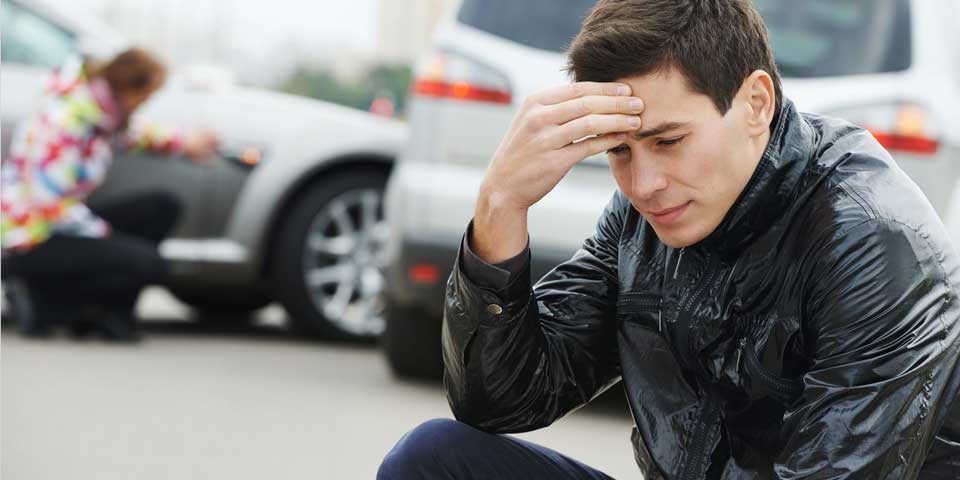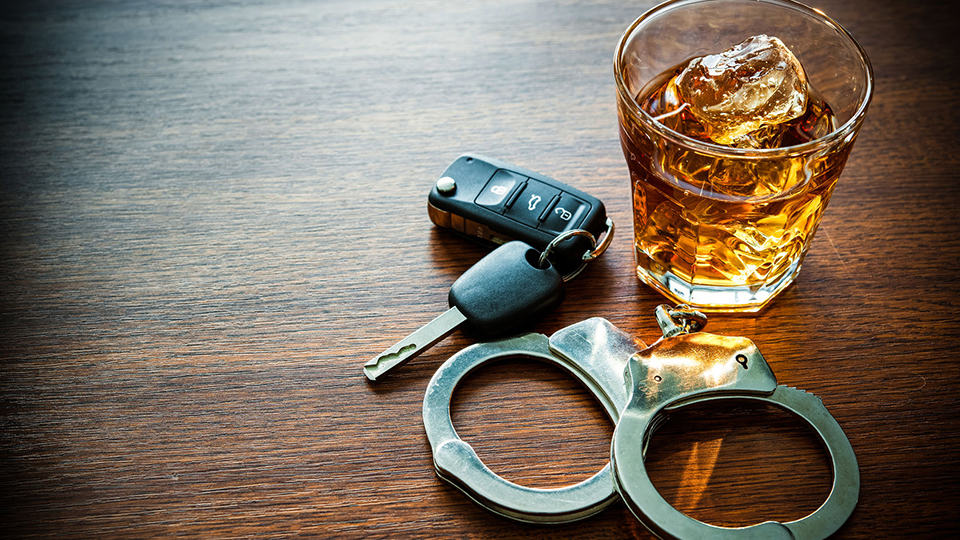In California, it is illegal to drive under the influence of drugs or alcohol (often referred to as a “DUI”). It does not matter whether the driver thinks they are good at it, or that they are taking a route they have taken hundreds of times. And if the incident resulted in an injury, the crime can be particularly serious.
That doesn’t mean, however, that people accused of driving under the influence are automatically guilty. There are many possible defenses that a skilled criminal attorney can explore. This article takes a closer look at the crime of driving under the influence, with a special emphasis on incidents that result in an injury.
- Elements of DUI Causing Injury
- Penalties for DUIs That Cause Injury
- Potential Defenses for People Charged with DUI Causing Injury
- No Driving Occurred
- Wrong Driver
- Driver Was Sober
- No Injury
- No Unlawful or Negligent Act
- Some Other Justification
- Strategies for Defending a DUI with Injury Case
- Final Thoughts
Elements of DUI Causing Injury

To be convicted of a crime in California, several facts must be proven. These are called “elements” of the crime. In cases involving driving under the influence of drugs or alcohol (“DUI”) causing injury, the elements are provided by California Vehicle Code sections 23152 and 23153.
Put simply, the elements are as follows:
- Driving. You drove a motor vehicle. The vehicle can be a car, motorcycle, motorbike, bus, dirt bike, ATV, motorized scooter, etc. It does not include human-powered bicycles.
- Intoxication. When you drove the motor vehicle, you were under the influence of drugs or alcohol. Even if you were sober, but your blood-alcohol content (often referred to as a “BAC”) was above the legal limit, you will be considered intoxicated.
- Unlawful or Negligent Driving. When you were driving, you broke a traffic law (other than driving under the influence) or you were driving negligently.
- Injury. Your unlawful or negligent driving caused the injury of a person other than yourself.
Several of these elements are explored in more detail below.
“Driving” Defined
California courts hold that driving is the willful and intentional controlling of the car in order to move it and actually making it move. A driver is driving when they cause the car’s wheels to turn and move the car from one place to another, even if only an inch away.
Simply sitting behind the wheel does not constitute driving for the purposes of a DUI charge, but it can be circumstantial evidence that you recently drove the vehicle under the influence of drugs or alcohol.
Intoxication
Under California law, a person can be considered “under the influence” of alcohol even if their blood-alcohol content is under the legal limit. A person is under the influence if the drugs or alcohol have impaired their ability to operate a vehicle in a manner like they ordinarily would.
In addition to actual impairment, California has also made it unlawful for a person to drive if their blood-alcohol content exceeds a certain amount:
- For most drivers, they will be considered under the influence if their blood-alcohol content (“BAC”) is 0.08% or greater at the time of driving, or 0.08% or greater according to chemical tests done within three hours of driving.
- If the driver is driving a passenger for hire—such as a cab, chauffeur, or Uber driver does—the driver is under the influence if they have a 0.04% BAC or greater at the time of driving, or a 0.04 BAC according to chemical tests done within three hours of driving.
In these situations, a person can be guilty of driving under the influence even if they feel and appear perfectly sober.
Causing an Injury
Vehicle Code section 23153 was designed to provide harsher punishments for people who drive under the influence and commit an additional unlawful or negligent act. For this reason, the offense that causes the injury does not have to be related to or caused directly by the driver’s alcohol or drug-related impairedness.
Example
A person was driving under the influence with a dirty windshield. The windshield impaired the driver’s vision and the driver accidentally struck a pedestrian. The driver was guilty of DUI causing injury, even though the cause of the injury was the dirty windshield, not the driver’s intoxication.
Conversely, if the impaired driver’s unlawful or negligent act is unrelated to the victim’s injury, the driver is not guilty of DUI causing injury.
How Serious Injuries Need to Be
The injury caused by the driver’s unlawful or negligent act does not have to be great. If someone other than the driver is hurt in a way that is more serious than being frightened, startled, or a little bruised, the “injury” element of the crime is met.
Thus, a person can be convicted of DUI causing injury even if the injury is not life-threatening or serious.
Penalties for DUIs That Cause Injury

First-Time Offenders
The sentence in DUI cases can vary significantly depending on whether the defendant has previous offenses. If the defendant has no previous offenses, a violation of Vehicle Code section 23153 can be charged as either a misdemeanor or a felony. The available punishments are as follows:
| Code Section | Vehicle Code, §§ 23153, 23554 |
| Violation Type | Can be charged as a misdemeanor or a felony (depending on the prosecutor’s discretion). |
| Custody Time | If charged as a misdemeanor, between 90 days and one year in county jail. If charged as a felony, up to three years in state prison. |
| Additional Consequences |
|
Subsequent Convictions
If the defendant has one or more of the following convictions within ten years of the current charge, they will face a higher range punishments:
- Reckless driving,
- Driving under the influence of drugs or alcohol, or
- Driving under the influence of drugs or alcohol causing injury.
If the defendant has only been convicted of one previous offense in the last ten years, a DUI causing injury can still be charged as either a misdemeanor or a felony. If, however, they have two or more previous offenses in the last ten years, the charge is an automatic felony.
The punishment for these offenses is as follows:
| Code Section | Vehicle Code, §§ 23153, 23560 |
| Violation Type | Can be charged as a misdemeanor or a felony (depending on the prosecutor’s discretion). |
| Custody Time | If charged as a misdemeanor, between 120 days and one year in county jail. If charged as a felony, up to three years in state prison. |
| Additional Consequences |
|
| Code Section | Vehicle Code, §§ 23153, 23566 |
| Violation Type | Felony |
| Custody Time | Up to four years in state prison. |
| Additional Consequences |
|
Increased Punishment with Serious Injuries In cases where the offense is charged as a felony, the defendant could face an increased punishment if someone other than the driver suffered a “great bodily injury.” A great bodily injury is a significant or substantial physical injury.
The defendant in cases involving a great bodily injury could face an additional three years in state prison, if convicted. If the victim is rendered comatose or paralyzed, the defendant could face an additional five years in state prison.
If the victim was a child under the age of five or a senior over the age of 70, the consequences can be even greater.
Other Consequences of a Conviction
In addition to the legal consequences discussed above, a conviction for driving under the influence of drugs or alcohol and causing injury can have some significant consequences on a person’s life. Those include:
- Car insurance companies may refuse to insure offenders, or only do so at very high premiums.
- Convictions are a matter of public record and can be found on background checks.
- A parent with a felony DUI may be disadvantaged in a child custody case.
- It can become especially difficult to find employment as a driver.
- Felons cannot own and register firearms in California.
- Depending on the severity of the felony, a felon may lose the right to vote.
- A felony conviction can make it difficult to enter certain professions, like law, teaching, and medical professions.
- The victim may sue the offender in civil court.
These can apply even if the defendant never steps foot in a jail or prison cell.
Potential Defenses for People Charged with DUI Causing Injury

DUI causing injury is a strict liability offense. A strict liability offense means that it doesn’t matter what the offender intended or not. So, even if the driver thought they were sober or didn’t intend to cause an injury, they can still be convicted of the offense.
This differs from other crimes, like theft, where the defendant must have committed the crime with the intent to steal. The lack of an intent element in DUI cases means there are often fewer defenses to the crime.
Nevertheless, there are several common defenses to DUI causing injury. A few of those are explained below.
No Driving Occurred
As mentioned above, California courts hold that driving is the willful and intentional controlling of the car in order to move it and actually making it move.
Wrong Driver
Often, arresting police officers don’t witness car accidents, so they don’t necessarily know who was driving the car at the time of the accident unless the driver is alone.
If the person charged with a DUI causing injury was not the driver at the time of the accident, they are not guilty of the crime.
Driver Was Sober
A driver is not assumed to be under the influence to be charged with DUI. A field test or breathalyzer can indicate possible intoxication, and a body fluid test will confirm it. But drug and alcohol tests aren’t infallible, and false positives do happen.
No Injury
If there is no actual injury to a person other than the one driving under the influence, then there is no violation of Vehicle Code section 23153. As mentioned before, an injury has to be more than a scare and a few bruises.
And even if there was an injury, the cause of the injury isn’t always black and white. Something else may be the cause of injury, even if the accused was under the influence and driving at the time.
A different cause entirely out of the driver’s hands, or an intervening factor that could not have been foreseen, may be the actual cause of injury. But remember:
- If someone else was negligent and contributed to the victim’s injury (including the victim), that is not a defense to the crime.
- There does not need to be a causal link between the DUI and the unlawful or negligent act that caused the injury.
No Unlawful or Negligent Act
Some accidents are just that: accidental. Unfortunate events can occur even when someone is being cautious, reasonable, and law-abiding.
For example, a driver the influence in the rearview mirror and over their shoulder while backing out, but they still hit a friend who as crouching behind the car. It’s not a normal thing to get out of your car, look people crouching behind it, then get back in and back out.
Some Other Justification
If a driver is otherwise obeying the law but is forced or compelled to break it in order to avoid a worse outcome, they may have been justified in their actions, even though the outcome was an injury to someone else.
Example
A person under the influence drives down a two-way residential street at the speed limit, but a small child suddenly runs out from between parked cars in front of the driver’s car. The driver swerves to avoid killing the child.
If, in the process of doing so, the driver clips a car in another lane and causes an injury, they may have technically committed a DUI causing injury. But the driver’s desire to avoid killing the child might justify the driver’s negligent or unlawful lane-change.
Strategies for Defending a DUI with Injury Case
The prosecution must prove that all elements of the crime have been met to sustain a conviction. The driver must be under the influence, break the law or act negligently, AND cause injury to someone other than themselves while driving.
If the prosecution cannot prove one of these elements, beyond a reasonable doubt, then there can be no conviction for felony DUI under Vehicle Code section 23153. It is usually best to attack the prosecution’s weakest argument—the element for which they have the least evidence. Here are some strategies to do that:
Plea Bargaining
If there isn’t strong evidence to prove that the driver’s negligence or unlawful behavior was the proximate cause of injury, but there is strong evidence of DUI, agreeing to plea to misdemeanor DUI may be a good idea.
A plea bargain can help keep the defendant out of prison if he or she has less than three prior DUIs, and from having a felony on his or her record. It might also allow the defendant to negotiate a lighter overall sentence.
Challenging Testing Procedures
False positives, inaccurate lab equipment, and improper field tests can all lead to an unwarranted DUI arrest. In many cases, courts will not admit evidence of drugs or alcohol if the testing procedures are clearly suspect or obviously wrong.
If the evidence is attacked successfully, the prosecution can be left without proof that the defendant was under the influence of drugs or alcohol.
Challenging Police Conduct
You may know of cases dismissed on “technicalities,” where there is no trial and no court has acquitted the defendant, but the defendant nevertheless walks free. While this may infuriate some, it is a reflection of our nation’s dedication to justice in both the letter and spirit of the law.
The police and the prosecution are duty bound to ensure that they serve the people while protecting the civil rights of defendants. After all, defendants are people, too. As such, cases are sometimes dismissed for police or prosecutorial misconduct.
Example
The police are often required to explain someone their rights before conducting an interrogation of someone in custody. If they unlawfully fail to do so, any evidence, admissions, or confessions that are found as a result of that interrogation are likely to be thrown out. This can make trying the case much more difficult for the prosecutor.
Final Thoughts
If you have been charged with driving under the influence causing injury, the facts of your case matter. Some facts can negate elements of the crime and ultimately result in dismissal of the charges.
At a minimum, there may be mitigating circumstances that work to reduce or minimize the penalties you now face. An experienced criminal attorney can help by arguing for those mitigating circumstances.
It is often a good idea to speak to a qualified and caring criminal defense attorney to give yourself the greatest protection possible. Call Los Angeles Criminal Defense Long Beach Criminal Lawyer for honest and effective legal advice: 562-304-5121.
References [H3]
-
Veh. Code, § 670 [“A ‘vehicle’ is a device by which any person or property may be propelled, moved, or drawn upon a highway, excepting a device moved exclusively by human power or used exclusively upon stationary rails or tracks.”].
-
Clingenpeel v. Municipal Court (1980) 108 Cal.App.3d 394, 399.
-
Veh. Code, § 23152, subds. (a), (f).
-
CALCRIM Nos.
2100, 2101; Veh. Code, § 23153; People v. Capetillo (1990) 220 Cal.App.3d 211, 216 [“Violation of section 23153, subdivision (a) requires proof of three elements: (1) that the defendant drove a vehicle while under the influence of an alcoholic beverage (or drug); (2) that when so driving, the defendant did some act which violated the law or failed to perform some duty required by law; and (3) that as a proximate result of such violation of law or failure to perform such duty, another person was injured.”]. -
Henslee v. Dep’t of Motor Vehicles (1985) 168 Cal.App.3d 445, 451–452 [“In our opinion the term ‘drive’ within the meaning of this code section includes the situation where . . . an intoxicated individual actively asserts control over a vehicle and takes every step necessary to resume travel along the public road.”]; Padilla v. Meese (1986) 184 Cal.App.3d 1022, 1029 [“It is true that the driver in Henslee only moved the car slightly. But the movement need not be extensive; even a matter of a few inches will suffice to constitute driving. In our view, if the driver does not move the vehicle in the officer’s presence, the offense is not committed in his presence.”].
-
In re Queen T. (1993) 14 Cal.App.4th 1143, 1145 [“Minor’s act of steering the car, although she was not operating the accelerator or brakes, renders her a ‘driver’ within the meaning of sections 305 and 23153.”].
-
Music v. Dep’t of Motor Vehicles (1990) 221 Cal.App.3d 841, 850 [“[I]f the driver does not move the vehicle in the officer’s presence at least a few inches, the offense of driving under the influence has not occurred in the officer’s presence. Any ensuing warrantless arrest is invalid”].
-
Veh. Code, § 23152 [“It is unlawful for a person who is under the influence of any alcoholic beverage to drive a vehicle.”].
-
Byrd v. Municipal Court (1981) 125 Cal.App.3d 1054, 1058 [“To be ‘under the influence’ within the meaning of the Vehicle Code, the liquor or liquor and drug(s) must have so far affected the nervous system, the brain, or muscles as to impair to an appreciable degree the ability to operate a vehicle in a manner like that of an ordinarily prudent and cautious person in full possession of his faculties.”].
-
Veh. Code, § 312 [defining “drug”].
-
Veh. Code, §§ 23152, subd. (b), 23153, subd. (b).
-
Veh. Code, § 23152, subd. (e), 23153, subd. (e).
-
People v. Weems (1997) 54 Cal.App.4th 854, 860 [“The specific intent of the Legislature in enacting section 23153 was to punish more severely those drivers who commit a concurrent unlawful act or breach of duty in addition to driving under the influence.”].
-
-
People v. Graybehl (1944) 67 Cal.App.2d 210, 218.
-
See, e.g., People v. Capetillo (1990) 220 Cal.App.3d 211, 219 [driving someone else’s car without permission did not meet the element of the crime because the driver’s unauthorized use was not the proximate cause of the collision].
-
People v. Lares (1968) 261 Cal.App.2d 657, 662 [“Bodily injury means just what it says — harm or hurt to the body. Common sense requires more for conviction than a ‘shaking up’ of a person in a car which is in an accident, or fright, or a minor headache; it means very obviously a hurt to the body.”].
-
People v. Dakin (1988) 200 Cal.App.3d 1026, 1036.
-
Vehicle Code, § 23554.
-
Veh. Code, §§ 23103, 23103.5.
-
Veh. Code, § 23152.
-
Veh. Code, § 23153.
-
Veh. Code, § 23560.
-
Veh. Code, § 23566.
-
See Penal Code, § 12022.7; Veh. Code, § 23566, subd. (b).
-
Penal Code, § 12022.7, subd. (f) [“As used in this section, ‘great bodily injury’ means a significant or substantial physical injury.”]; People v. Guzman (2000) 77 Cal.App.4th 761, 765.
-
Penal Code, § 12022.7, subd. (a).
-
Penal Code, § 12022.7, subd. (b).
-
Penal Code, § 12022.7, subd. (c).
-
People v. Fator (1936) 14 Cal.App.2d 403, 404 [“The law is well settled that HN1 contributory negligence is never a defense nor an excuse for crime, nor can it in any degree serve to purge an act otherwise constituting a public offense of its criminal character.”].
-
Patterson v. New York (1977) 432 U.S. 197, 210.
-
Veh. Code, § 23153, subd. (a).
-
Although there might be an available conviction for a different crime.





